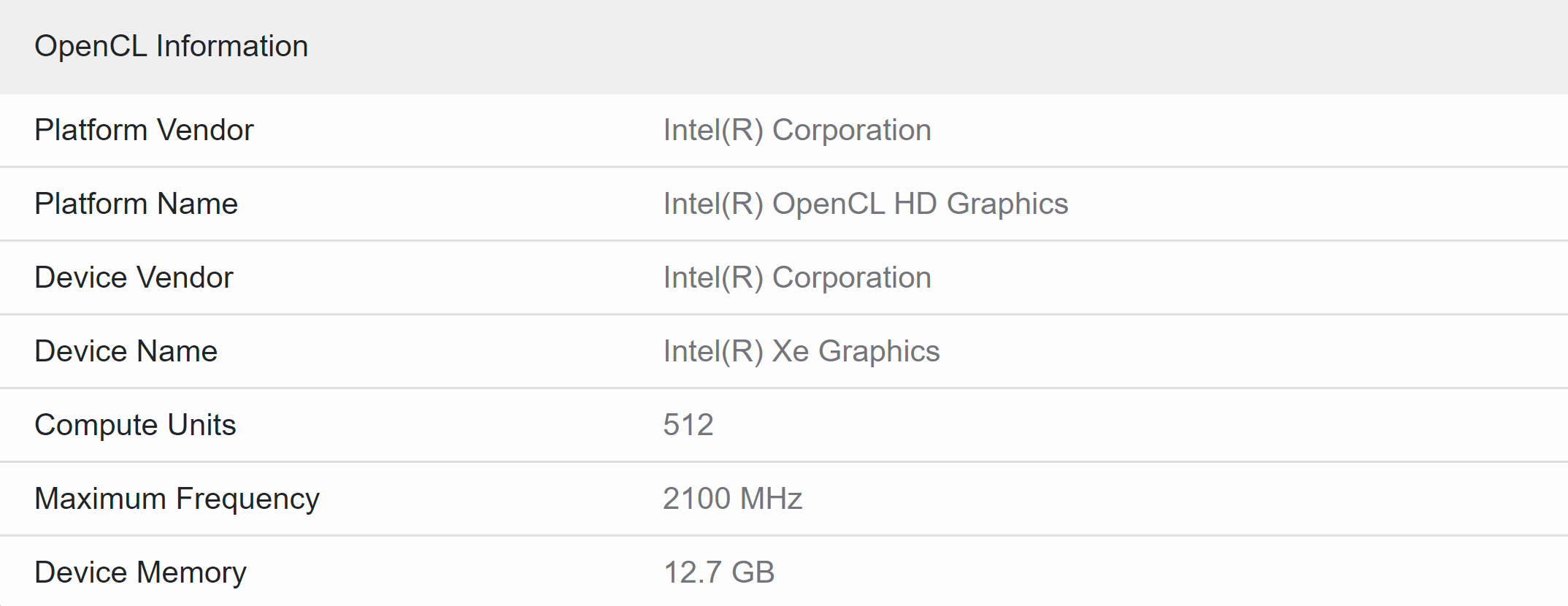Forward-looking: Intel’s upcoming Arc flagship has made its first appearance in an online benchmark database. An unnamed Intel partner took a GPU engineering sample for a whirl in the Geekbench OpenCL test suite using a slightly dated i5-9600K validation platform and here's what we learned...

In outright numbers, the GPU does poorly. The four runs achieved an average OpenCL score of about 67,000 points and its highest score was 69,000 points. For comparison, the AMD Radeon RX 6800 XT releases about a year ago sits in the 150,000 to 180,000 point ballpark.
But don’t be discouraged. Consider this: according to the metadata collected by Geekbench during the runs, the GPU was hovering at around 1.3 GHz. At that frequency, with 512 EUs, the GPU has a theoretical 11 TFLOPS of performance.
AMD’s Radeon RX 6600 XT has similar 11 TFLOPS and scores in the 60,000 to 70,000 point range. Hence, Intel’s architecture has the same per-TFLOPS performance in OpenCL as AMD’s does.
So the question is: can Intel match AMD’s high-end TFLOPS numbers?

512 is the magic number that says this is the flagship, but it’s 512 EUs, not CUs.
According to Geekbench, the GPU had a rated clock speed of 2.1 GHz. If it had run at that speed, and not at 1.3 GHz, then it would’ve had 17 TFLOPS, which is on par with the RX 6800 (non-XT). So the answer to that question is, yes, if 2.1 GHz is achievable.
And frankly, 2.1 GHz isn’t that high. If the rumors are true and Intel is using the TSMC N6 node, then they could potentially push the clocks high enough to break into RX 6800 XT and RTX 3080 performance territory.
Remember that this is pure conjecture, but we're not the first to claim that Intel’s GPUs will land somewhere alongside the RTX 3070 or RTX 3080. Intel themselves hinted that their flagship will be priced a touch above the latter at $740 to $790. Still, as today’s OpenCL scores show, Intel may still be hard at work to get there.
https://www.techspot.com/news/92319-intel-flagship-arc-alchemist-gpu-has-lackluster-first.html